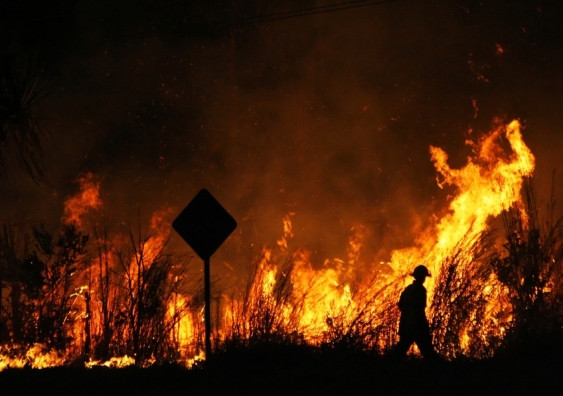Browsing Residential Or Commercial Property Security: Recognizing the Significance of a BAL Report
Browsing Residential Or Commercial Property Security: Recognizing the Significance of a BAL Report
Blog Article
How BAL Record Impacts Shrub Fire Security Procedures
In the realm of bush fire defense, the Structure Attack Degree (BAL) record stands as a crucial tool that significantly affects the security and durability of homes in fire-prone areas - BAL Report. The influence of a BAL analysis extends far beyond mere documentation; it functions as the keystone for identifying the appropriate building standards and fire security procedures essential to mitigate the risks presented by bushfires. As areas face increasingly extreme fire periods, understanding exactly how the BAL report forms these safety procedures ends up being paramount for home builders, policymakers, and homeowners alike
Understanding the Bushfire Strike Level

Relevance of BAL Record Analysis

Furthermore, the BAL report evaluation functions as a foundational action in abiding by lawful commitments and requirements associated to bushfire security. Regional councils and authorities commonly mandate the entry of a BAL record as part of the preparation and building approval procedure to ensure that homes are properly secured versus bushfire threats. Falling short to perform a thorough BAL report assessment can cause poor defense procedures, leaving properties vulnerable to devastating bushfire incidents.
Building Specifications Based Upon BAL
A thorough understanding of the Bushfire Attack Degree (BAL) makes it possible for residential or commercial property proprietors to implement building and construction requirements customized to their details risk account. Building criteria based on BAL are vital in reducing the influence of bushfires on homes. The BAL ranking categorizes the prospective threat a residential property encounters throughout a bushfire on a scale from BAL-Low to BAL-FZ (Fire Area) Each BAL level matches to certain building requirements outlined in the Australian Basic AS3959-2018 Building And Construction of Buildings in Bushfire-Prone Areas. Homes identified as BAL-Low may just require fundamental measures such as removing particles and maintaining gardens, while those in greater BAL categories require more robust procedures like cinder screens, fireproof materials, and sealed home windows. Sticking to these building criteria not only improves the architectural resilience of the building however additionally enhances the total security of homeowners during a bushfire occasion. Property owners must thoroughly consider their BAL rating and comply with the corresponding building requirements to effectively secure their owners and homes.
Applying Fire Defense Actions
With the structure of building and construction criteria based upon Bushfire Strike Degree (BAL) in position, the focus now shifts towards the useful execution of fire defense actions to strengthen residential or commercial properties against bushfire dangers. Executing fire protection steps entails a combination of passive and active strategies to enhance the resilience of buildings in bushfire-prone areas. Passive actions consist of utilizing fire-resistant structure products, installing ember guards on vents, securing spaces in roofings and wall surfaces, and keeping a clear area around the building devoid of flammable vegetation. Energetic procedures include having firefighting equipment easily offered, such as hose pipes and water pumps, along with developing a defendable space around the property by getting rid of plant life and having a well-kept garden. In addition, developing a discharge strategy and making certain all citizens are mindful of emergency situation treatments blog are essential parts of effective fire protection steps. By integrating both passive and energetic approaches, properties can significantly decrease their vulnerability to bushfire occurrences and boost the safety and security of owners.
Safeguarding Houses Against Bushfires
Properly guarding homes versus the damaging impacts of bushfires requires a proactive and comprehensive approach to fire protection steps. In addition, securing voids and vents to protect against cinder invasion, as well as including fire-resistant doors and windows, can assist strengthen the home's protection against bushfires. By embracing an aggressive stance and incorporating these safety steps, property owners can significantly raise their possibilities of protecting their homes versus bushfires.
Conclusion
To conclude, the read this post here Bushfire Assault Level (BAL) record plays a vital role in establishing the needed protection procedures against bushfires. By evaluating the BAL, building and construction requirements can be tailored to mitigate the threats and make sure the security of homes in fire-prone areas. Executing fire security procedures based upon the BAL record is essential in securing homes from potential bushfire dangers. It is important for property owners to prioritize BAL assessments and comply with suggested building standards to enhance bushfire resilience.
In evaluating bushfire risk to buildings, understanding the Bushfire Attack Level (BAL) is a crucial part for carrying out effective defense measures. In general, a clear understanding of the Bushfire Assault Degree is vital for applying sufficient security actions and reducing the influence of bushfires on homes.

Report this page